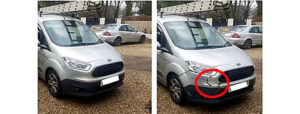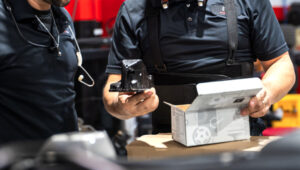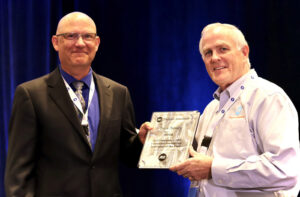In parts one, two, three, four and five we learned about driving profits and creating cash flow. Cash flow has a sole purpose to fund your bigger “why” of owning an auto repair center. To ensure it can maintain or sustain the funding of your “why,” it creates its own cash reserves so if and when a crisis hits, like a Covid-19 for three months or more, you can have more financial peace in the midst of the storm.
Over the years, my understanding of “cash reserves” has changed to what I now call “cash flow reserves.” Cash reserves, for the most part, just sit there waiting to be used. “Cash flow reserves” are actively creating additional ongoing cashflow in a few different ways. When I am working to create just cash reserves it means I am working FOR money. When I create cash flow reserves, money is working FOR me.
“Your cash flow reserve should grow on its own. Funds should be in a financial mechanism earning money such as interest, but also readily available to you with in 24-48 hours for emergencies without taking a big penalty hit for withdrawals.”
— Dave Schedin
Your cash flow reserve should grow on its own. Funds should be in a financial mechanism earning money such as interest, but also readily available to you with in 24-48 hours for emergencies without taking a big penalty hit for withdrawals. This is where you need to get with a financial planner and map out a financial strategy that works for you and your cash reserves goals’ timeline.
What also expanded my cash reserves to be cash flow reserves was looking at what steps I took to create cash flow or, more importantly, the steps I wasn’t taking. I took a lot of steps to be profitable per repair order, but I wasn’t taking all the steps to create consistent ongoing cash flow: a stream of repair orders. In Part five we talked about active delivery and booking the next appointments, loyalty and referral programs as three of those major steps.
So just how much cash reserves should a shop have? Let’s do some basic shop math to see what might make sense for you. To keep it simple, I’ll use baseline industry minimum benchmarks, percentages, in our example of a shop that sells $100,000 with three technicians.
Sales = $100,000
COGS = — $40,000 40% (cost of goods sold: tech pure wages and parts)
GP = $ 60,000 60% Gross Profit
Fixed Expenses = — $40,000 40% Fixed Expenses
Net Profit = $20,000 20% Net Profit
The shops COGS and fixed expenses total $80,000. If a crisis hits for three months then you would need $80,000 x 3 = $240,000. This actually has a built-in buffer because the COGS is variable in that if you sell less, it costs you less. For shops with a tech hourly pay method it still costs you tech wages, but parts costs would go down. On a tech flat rate pay method, both tech and parts cost would go down so your expense demand for the crisis period would not be as much.
If you constantly worked cashflow strategies, kept all expenses and purchases to a minimum and you created a consistent monthly $20,000 net profit then it would take you only 12 months to build $240,000 cash reserves. If you were an absentee owner and took $10,000 of net as a draw then it would take 24 months to build your reserve.
You don’t spend reserves — sort of. If it’s an emergency like a hoist breaks, use this to replace it, but be wise. If they offer you 0% interest for 12-24 months, then take it, and leave the money your interest is earning in its financial mechanism as long as possible. But realize, you are now “broke” the cost of the hoist and all focus should be on rebuilding the minimum cash reserve.
Three months of reserves of COGS and fixed expenses is a minimum most shops should have for their reserves. Smaller marketplaces or customer data bases may need more. Your annual forecasting session should reveal exactly what your specific business model needs are.
If you had three months reserve in place when Covid-19 hit would you have had a better level of peace knowing, while it would hurt cash flow, it wouldn’t kill it or your business. This latest Covid-19 crisis in the marketplace hit businesses that had the knowledge of cash reserves but didn’t have the true intention of building cash reserves.
Having a coach or accountability in place to keep you on track of cashflow steps being turned on and keeping those “impulse buying engines” turned off can go a long way to ensuring you create your own peace for the storm on the horizon.
—————————————————————————
** Forward this “Aftermarket Matters Weekly” to another shop and cc Coach Dave (copy and paste the email below). CompuTrek will email you Coach Dave’s e-book on Active Delivery for FREE!
Next from Coach Dave in the Workflow to Cashflow Series: Part 7 – “It takes money to make money – Determining ROI in every aspect of your business.”
Dave Schedin can be reached at 800-385-0724, dave@computreksystems.com, and www.computreksystems.com. A complimentary 30-minute discussion is available for the asking.








Comments are closed.